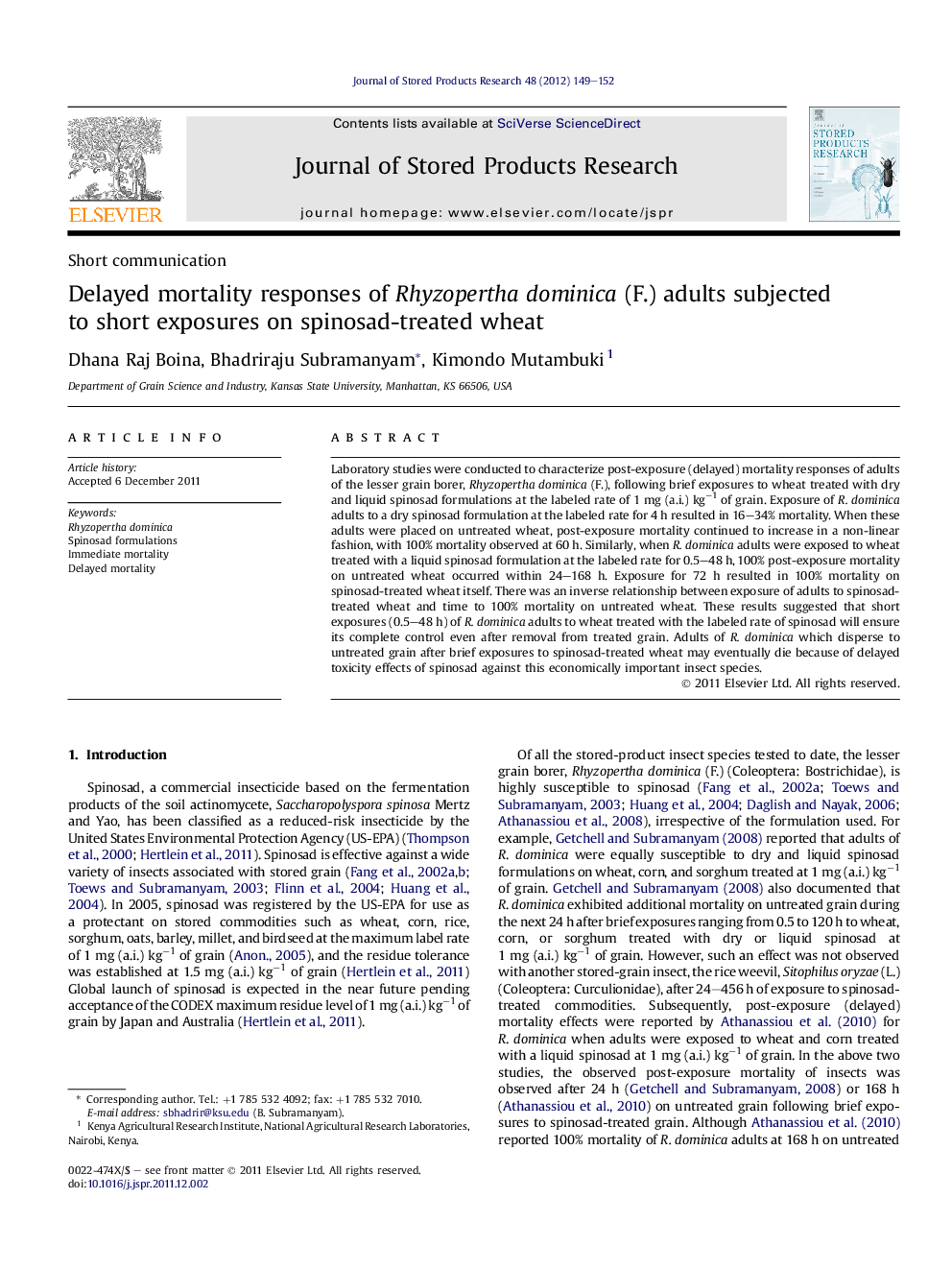| Article ID | Journal | Published Year | Pages | File Type |
|---|---|---|---|---|
| 4517290 | Journal of Stored Products Research | 2012 | 4 Pages |
Laboratory studies were conducted to characterize post-exposure (delayed) mortality responses of adults of the lesser grain borer, Rhyzopertha dominica (F.), following brief exposures to wheat treated with dry and liquid spinosad formulations at the labeled rate of 1 mg (a.i.) kg−1 of grain. Exposure of R. dominica adults to a dry spinosad formulation at the labeled rate for 4 h resulted in 16–34% mortality. When these adults were placed on untreated wheat, post-exposure mortality continued to increase in a non-linear fashion, with 100% mortality observed at 60 h. Similarly, when R. dominica adults were exposed to wheat treated with a liquid spinosad formulation at the labeled rate for 0.5–48 h, 100% post-exposure mortality on untreated wheat occurred within 24–168 h. Exposure for 72 h resulted in 100% mortality on spinosad-treated wheat itself. There was an inverse relationship between exposure of adults to spinosad-treated wheat and time to 100% mortality on untreated wheat. These results suggested that short exposures (0.5–48 h) of R. dominica adults to wheat treated with the labeled rate of spinosad will ensure its complete control even after removal from treated grain. Adults of R. dominica which disperse to untreated grain after brief exposures to spinosad-treated wheat may eventually die because of delayed toxicity effects of spinosad against this economically important insect species.
► Delayed toxicity of spinosad to Rhyzopertha dominica (F.) is poorly understood. ► R. dominica adults were exposed for 0.5–48 h to spinosad-treated wheat at 1 ppm. ► After spinosad exposure adult mortality was observed on untreated wheat. ► After 0.5–48 h exposures to spinosad, 100% mortality occurred within 168–24 h. ► Delayed toxicity makes spinosad a valuable product for R. dominica management.
